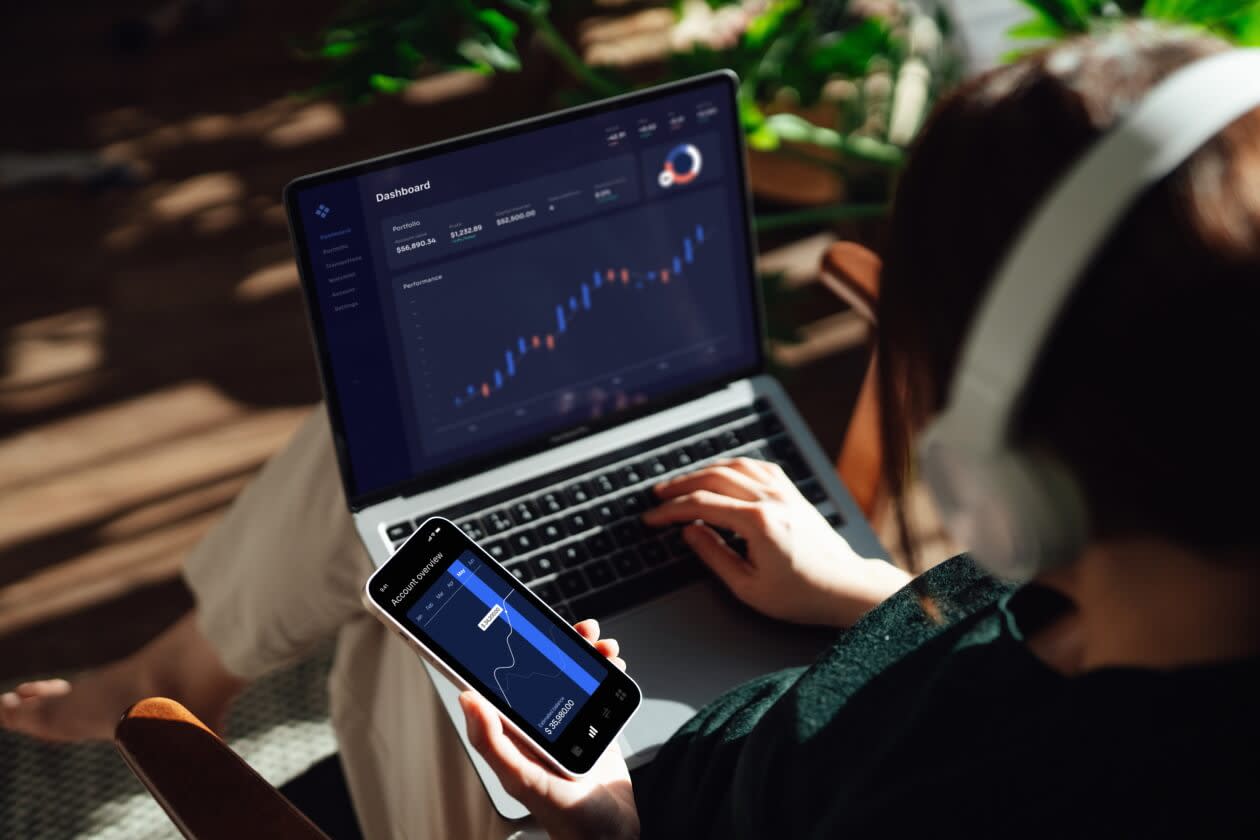The best way to invest is to hold a diversified portfolio for the long term. By spreading your investments across a range of areas, sectors or asset, when one isn’t performing well, the others can hopefully pick up the slack.
One of the largest sectors is Tech - of which the Magnificent Seven are a big and well-known part.
These seven are Nvidia, Microsoft, Apple, Amazon, Google, Meta and Tesla. Combined they have a market capitalisation – the value of shares on the stock market – of $10.3tn.
For those investing in passive funds, which track a market like the S&P 500, there’s a reason to take stock and revisit your portfolio. Here’s why.
This article isn’t personal advice. Investments can fall as well as rise in value, so you could get back less than you invest. If you’re not sure if an investment is right for you, ask for financial advice.
The magnificent seven’s impact on global stock markets
The magnificent seven alone form a large part of major indices, which are often ranked by market capitalisation. In the S&P 500, they form around 24% of the entire index.
Nearly a quarter of the value of the top 500 US companies is held in just seven stocks.
It doesn’t stop there. At the end of last month, the MSCI ACWI Index, an index which tracks large and midsize companies around the world, had about 63% in US companies. Many global tracker funds use this index as their benchmark to track against.
So, if you hold a fund or ETF which is tracking the S&P 500 or a global tracker fund, a significant portion of that investment is likely in just seven companies.
But that’s only the tip of the iceberg. These indices alone have lots of other tech companies which make up a lot of the rest of the pie.
S&P 500 sector weights
MSCI ACWI Index sector weights
You might see information technology in the build-up of both indices and think it’s not much higher than the weight of the magnificent seven.
But lurking below the surface are companies we might view as tech stocks which are classified in other sectors.
Amazon is a consumer discretionary, Google and Meta are communication services, Tesla is naturally in automobiles. Netflix, which is mainly based around streaming, is also listed as consumer discretionary.
You may have a much bigger weighting towards what you might consider tech beyond the classic definition of information technology.
What’s the problem?
This isn’t a prediction of things to come, investments could still rise and fall in value.
But if some of these large companies, go down in value, this could have a significant impact on your portfolio.
In funds that track an index, there’s often no limit to how much a tracker fund can hold in one single company as they’re trying to replicate the index.
This is different with actively-managed funds, when a manager will choose the stocks to beat a benchmark. A manager is normally restricted in how much they can hold in any one stock.
What’s the solution?
We think investors should hold a diversified portfolio made up of investments from around the world in different sectors.
This could include funds that invest in tech stocks, as they could still have room to grow. But having exposure to other companies and other sectors could help with performance when times are tougher.
Investing in funds isn't right for everyone. Investors should only invest if the fund's objectives are aligned with their own, and there's a specific need for the type of investment being made. Investors should understand the specific risks of a fund before they invest.
How you should build your portfolio will depend on your goals and how much risk you’re willing to take.
If you’re looking for help on how to build a portfolio yourself, we have the tools to help.
Want help investing?
We’re launching a new range of low-cost multi-index funds. There are four funds to choose from based on the level of risk you want to take. And it’s the only investment you need.
These funds are made up of investments that track markets, keeping costs down, but are managed by expert fund managers.
The managers will take care of day-to-day management, picking investments that track the market. They’ll manage the portfolio aiming to get the best return for your chosen level of risk over the long term. That means they’ll look after how much is invested in certain areas, so you’re not overexposed to any one sector.
All you need to do is check in every so often (we suggest every six months) to make sure it’s still right for you.
You can invest from just £100 as a lump sum or £25 as a monthly direct debit.
Invest by 11:59pm 5 June to get the fixed £1 per unit launch price.
HL Funds are managed by HL’s sister company, Hargreaves Lansdown Fund Managers Ltd.


